Pictured above and below: Hakea victoria, known as Royal Hakea.
Arguably, it has the most spectacularly variegated leaves of any plant on earth; the individuals in this post are by no means unusually splendid examples.
Fitzgerald River National Park is its stronghold, and all naturally occurring Royal Hakeas are within easy driving distance of “the Fitz”.
Most photos in this post were taken on a morning ascent of East Mount Barren on 21 September 2021.
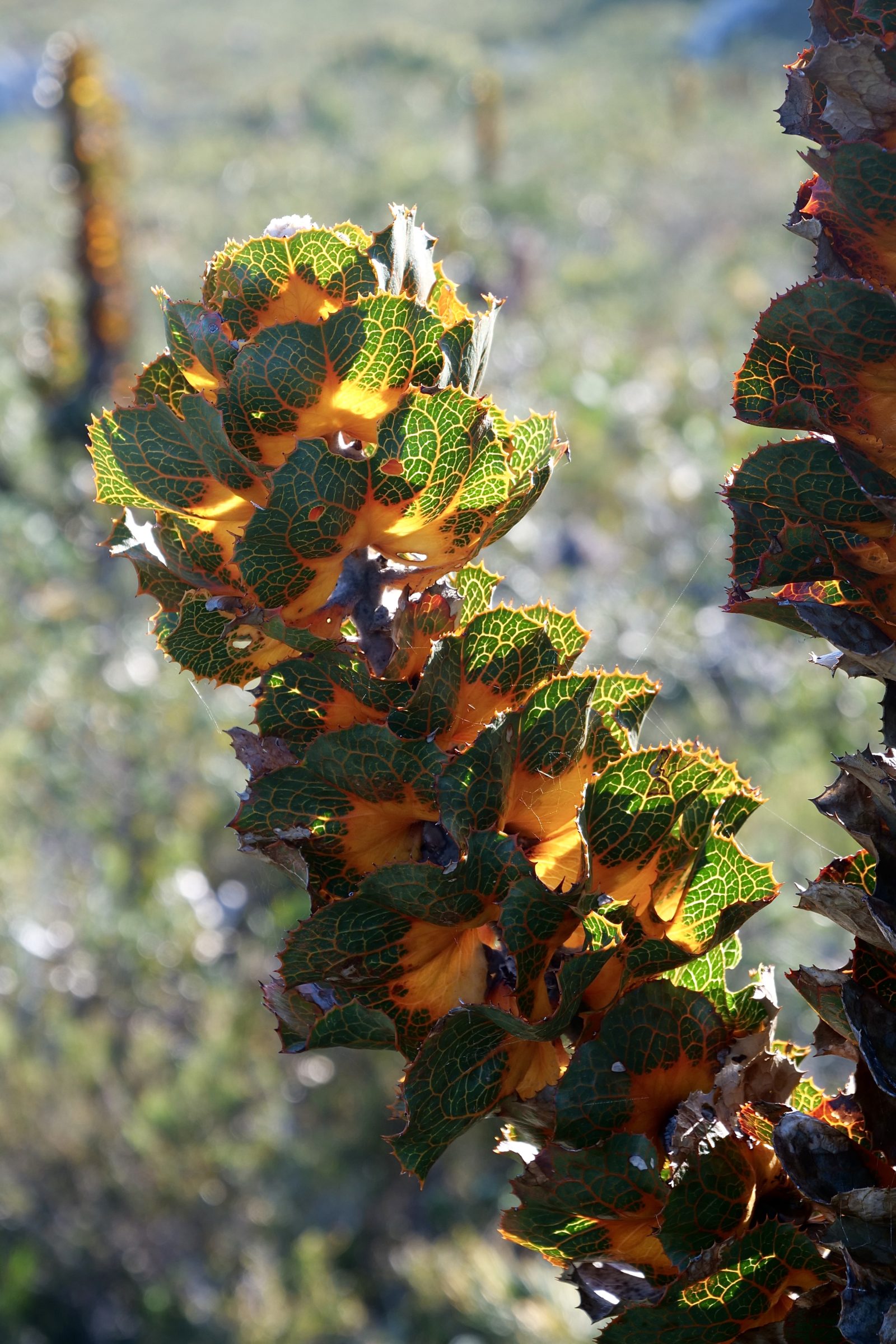
Royal hakeas are flowering plants, as you can see below, but this species is most especially noted for its leaves; a single individual can range from off-white to green, through yellow, orange and blood-red.
They are best appreciated within 90 minutes of sunrise or sunset, at which time they look as if there ought be dinosaurs grazing upon them!
The lower flanks and feet of East Mount Barren and of West Mount Barren are particularly good places to see Royal hakeas.
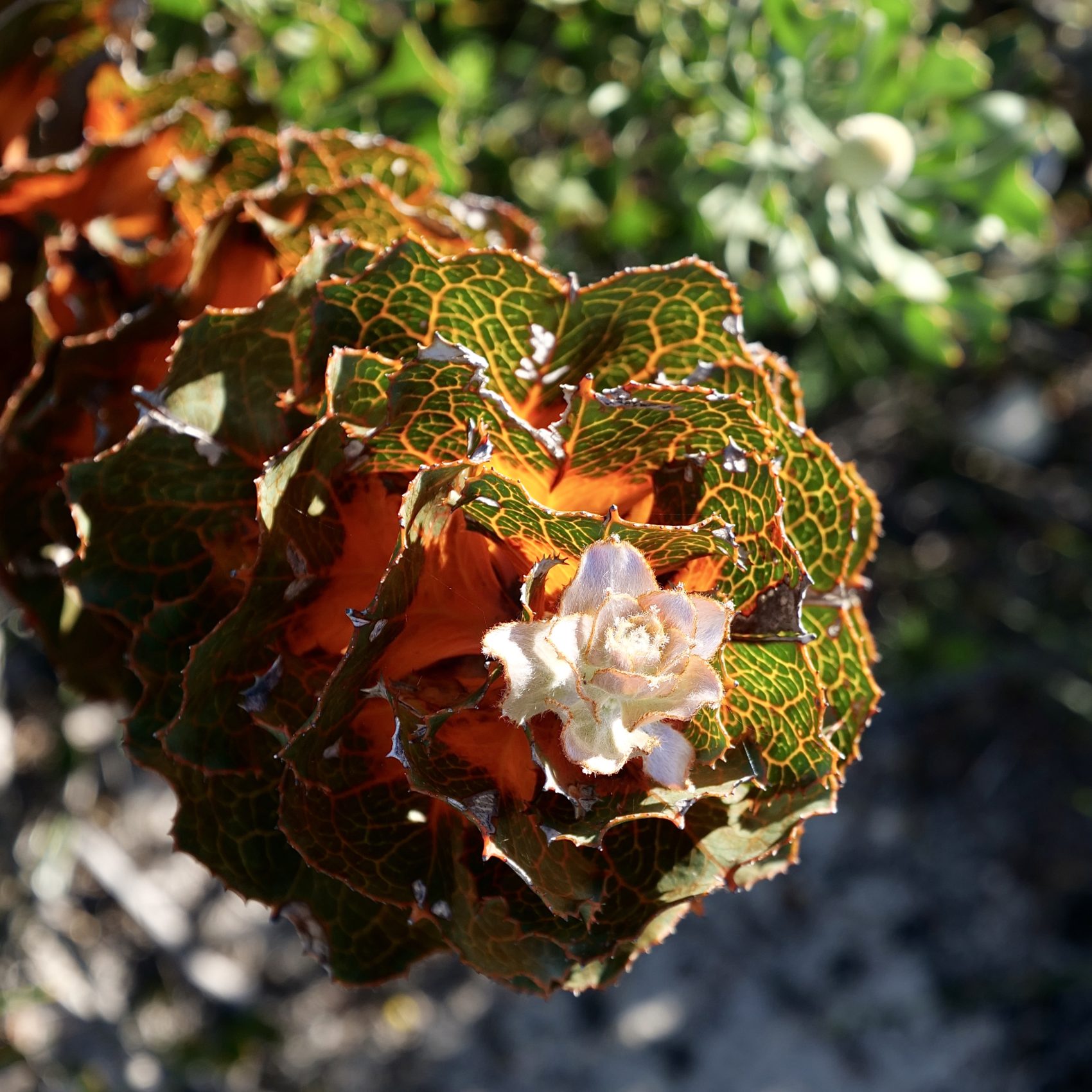
Hakeas are members of a very large family of plants; Proteaceae comprise 83 genera and more than1,600 known species.
Most Proteaceae live in the Southern Hemisphere, and many of them are highly specialised; for example, the overwhelming majority of Banksia species are endemic to southwestern Western Australia, and many of those species occur only within very specific parts of southwest WA.
The next plant is also one of the Proteaceae.
I am almost certain that it is one of the forty or so members of the genus Isopogon, commonly known as coneflowers.
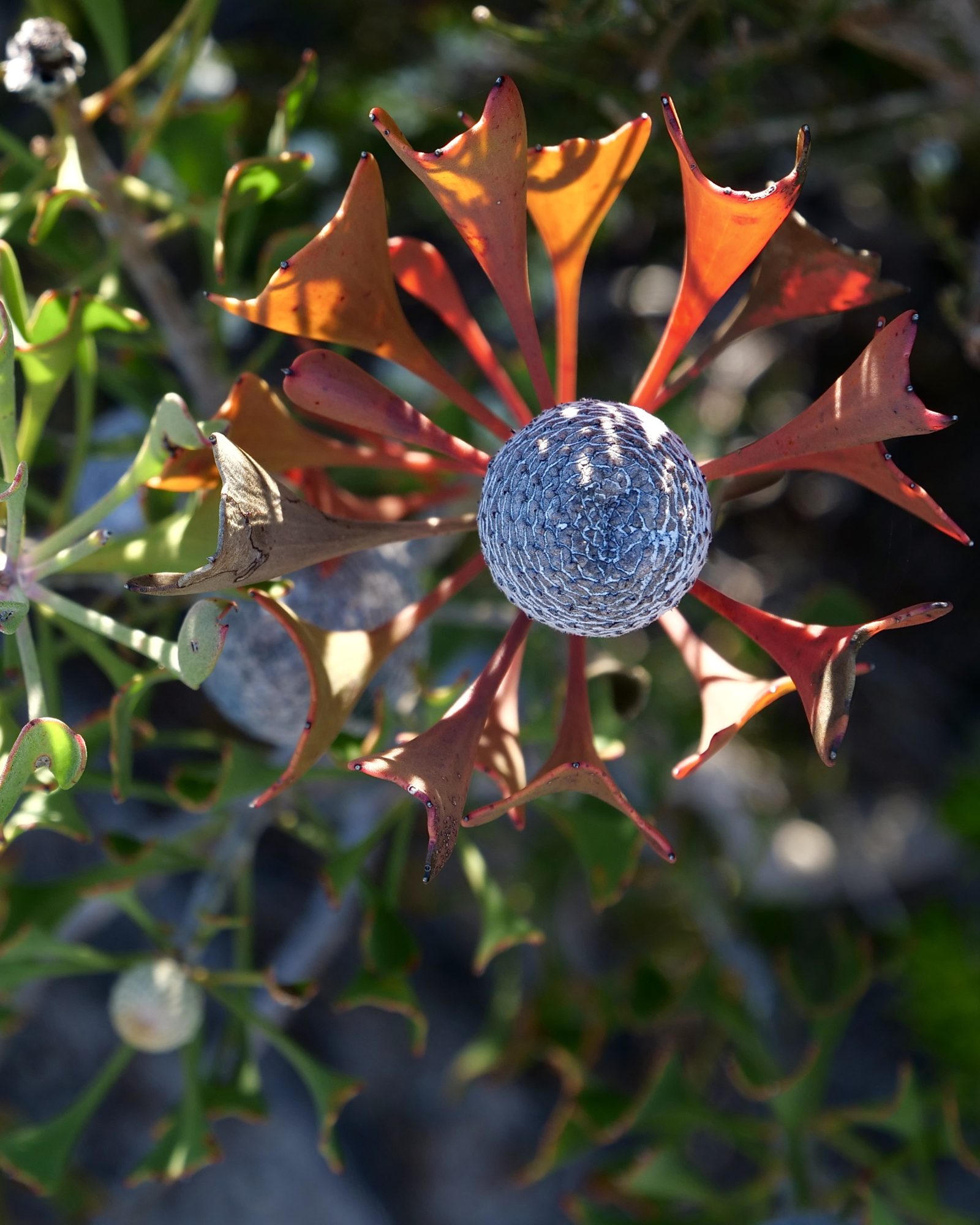
The climb up East Mount Barren is undoubtedly one of the world’s most botanically rewarding morning or afternoon walks.
In Spring you will certainly encounter many lovely examples of one of this region’s signature flowering plants.
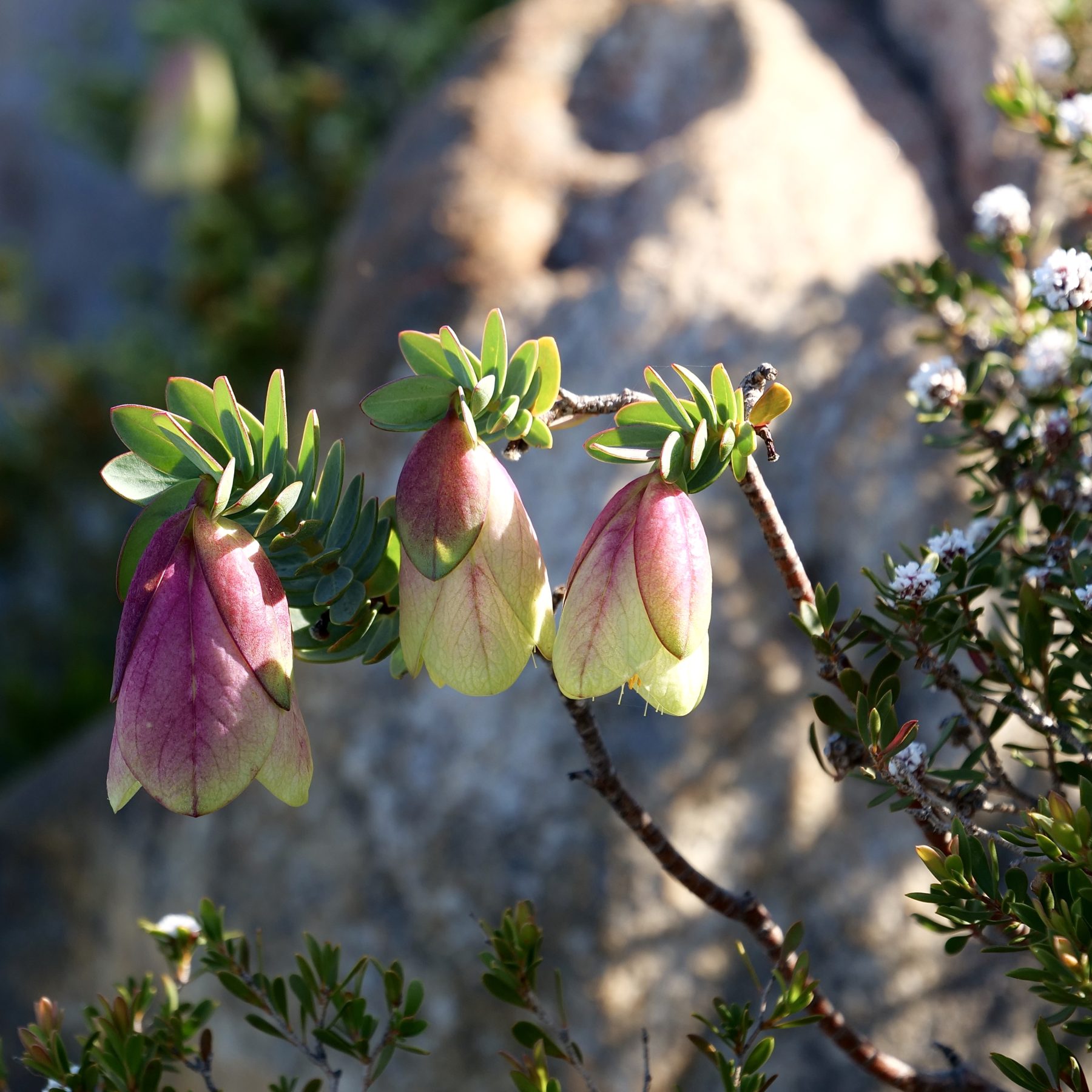
Pimelea physodes, known as the Qualup Bell, naturally occurs only in and near to the Fitzgerald Biosphere.
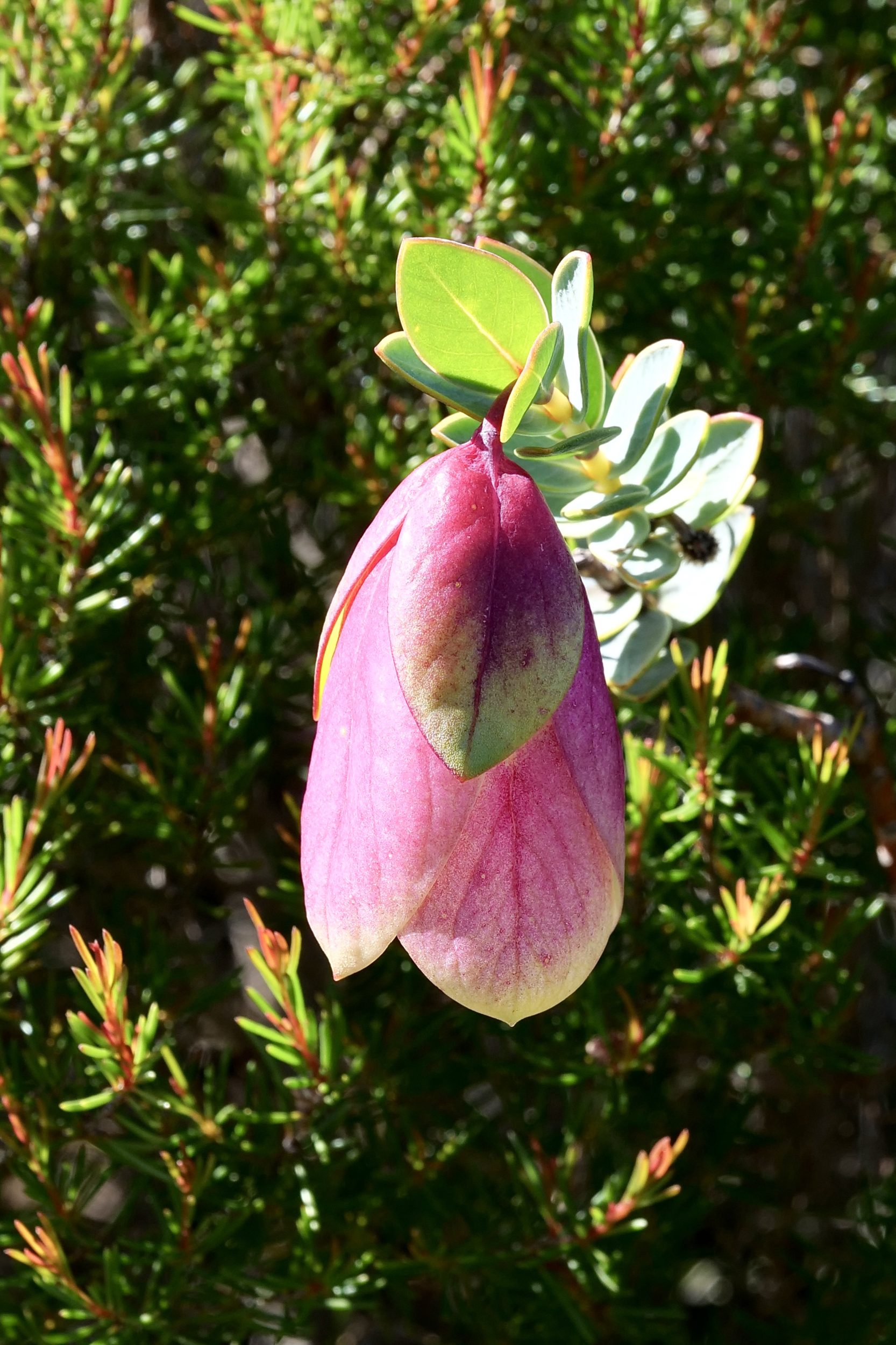
Also nigh-impossible to miss on East Mount Barren are many lovely examples of Regelia velutina, the Barrens Regelia, which is endemic to Fitzgerald River National Park.
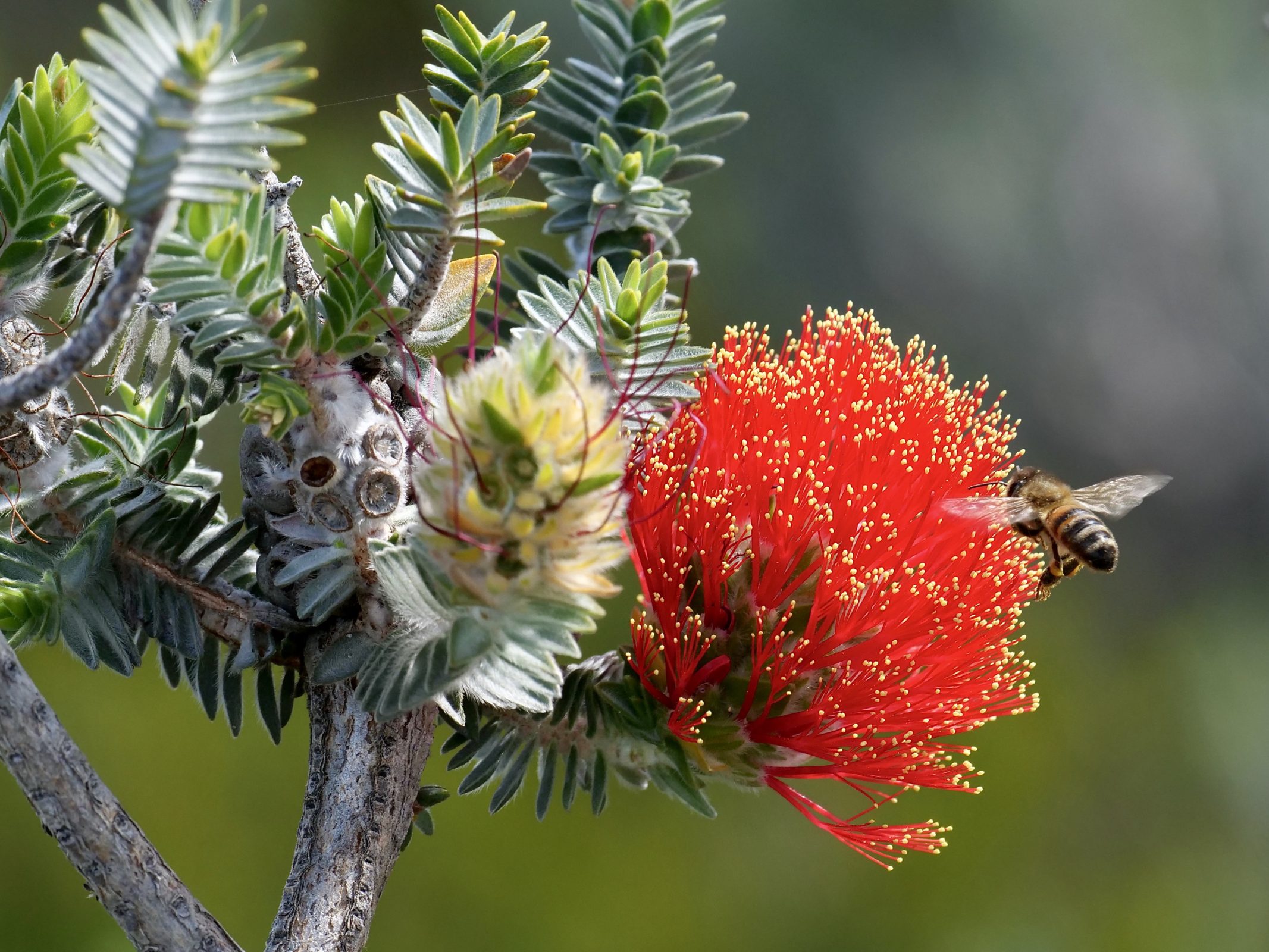
Also very easy to see is Calothamnus validus, the Barrens Clawflower; the Fitzgerald Biosphere contains all or almost all naturally-occurring members of this species, which is a member of the Myrtle family.
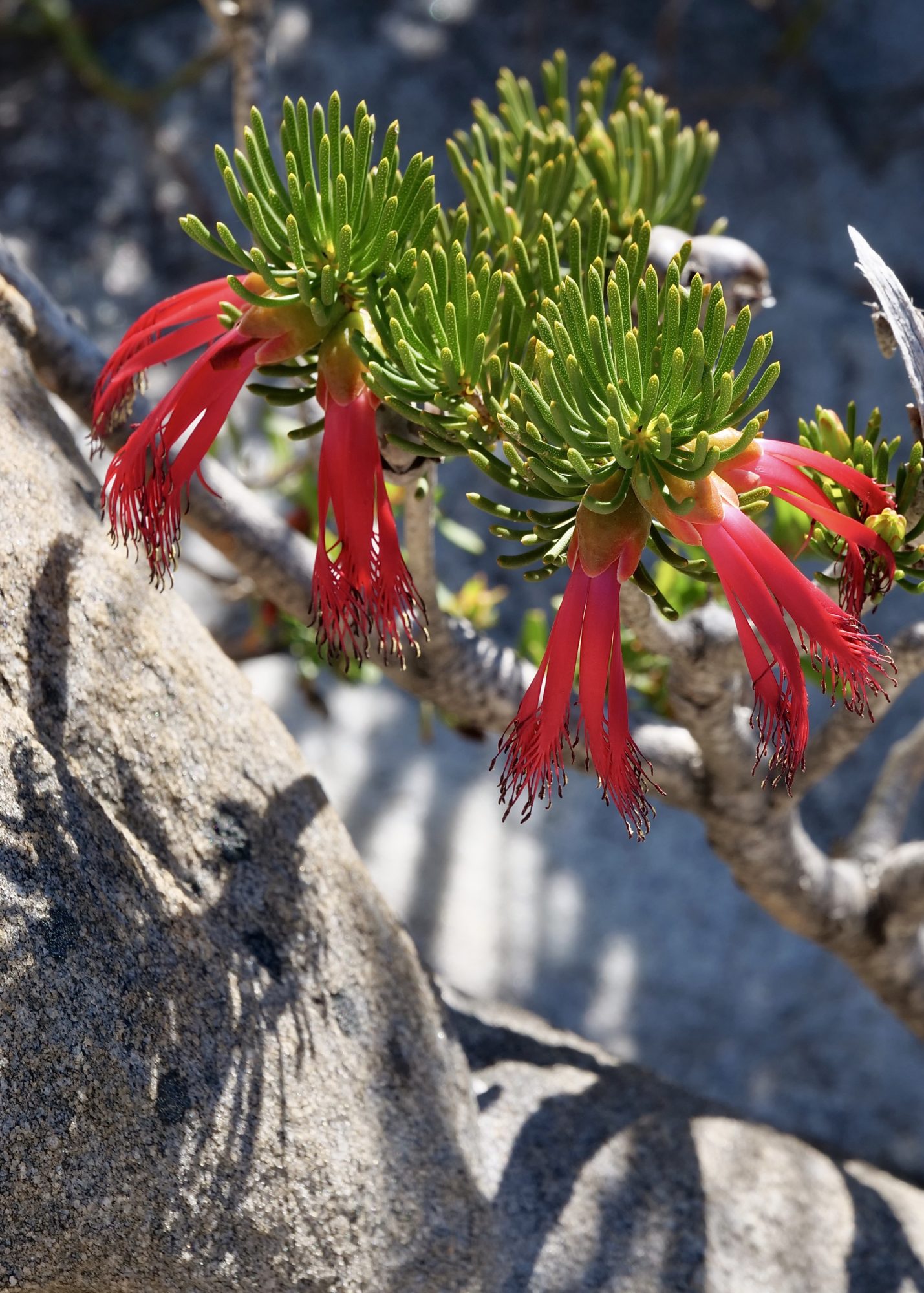
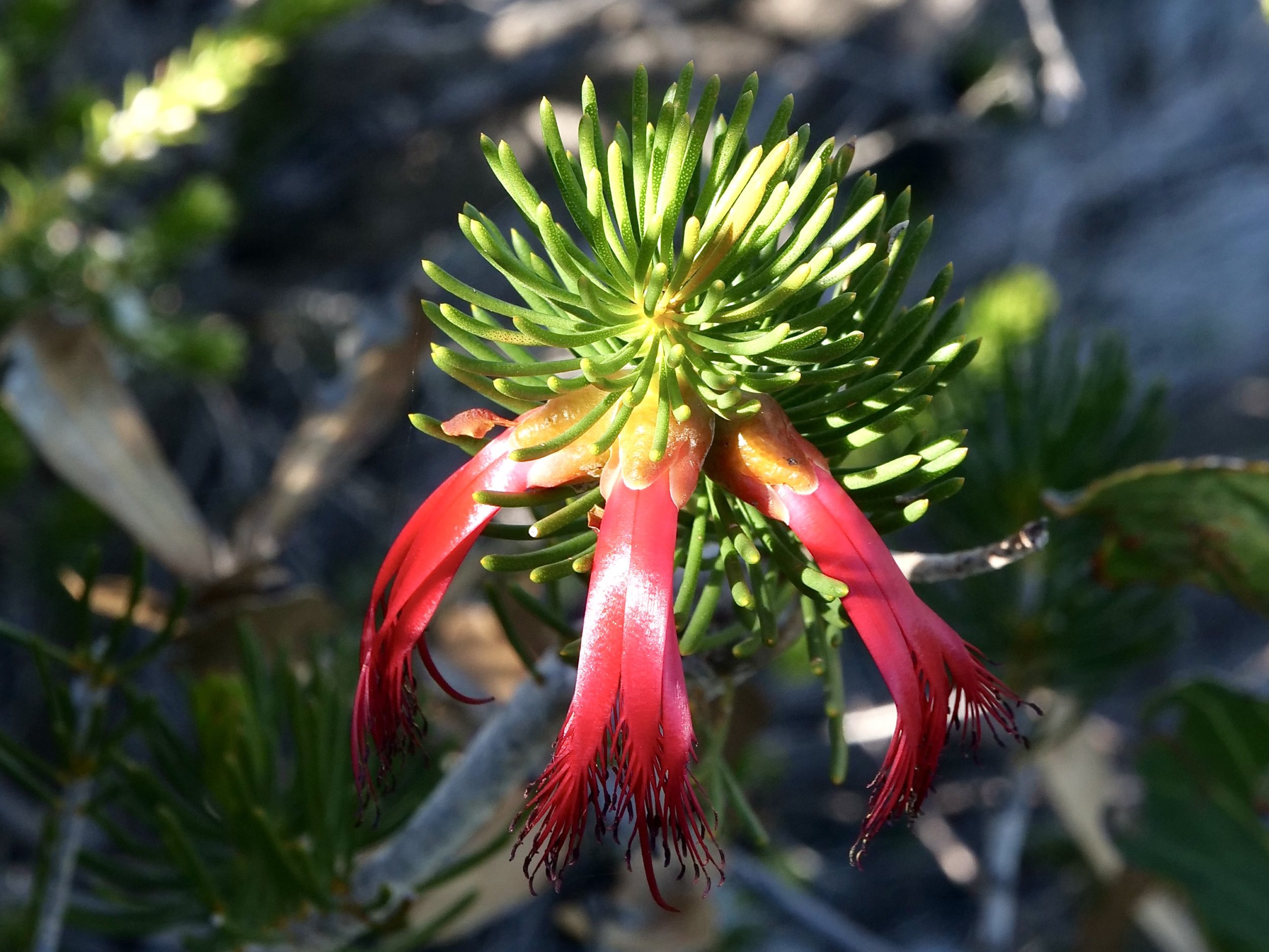
I have no idea what species is pictured below, but we saw quite a lot of them on 21 September 2021.
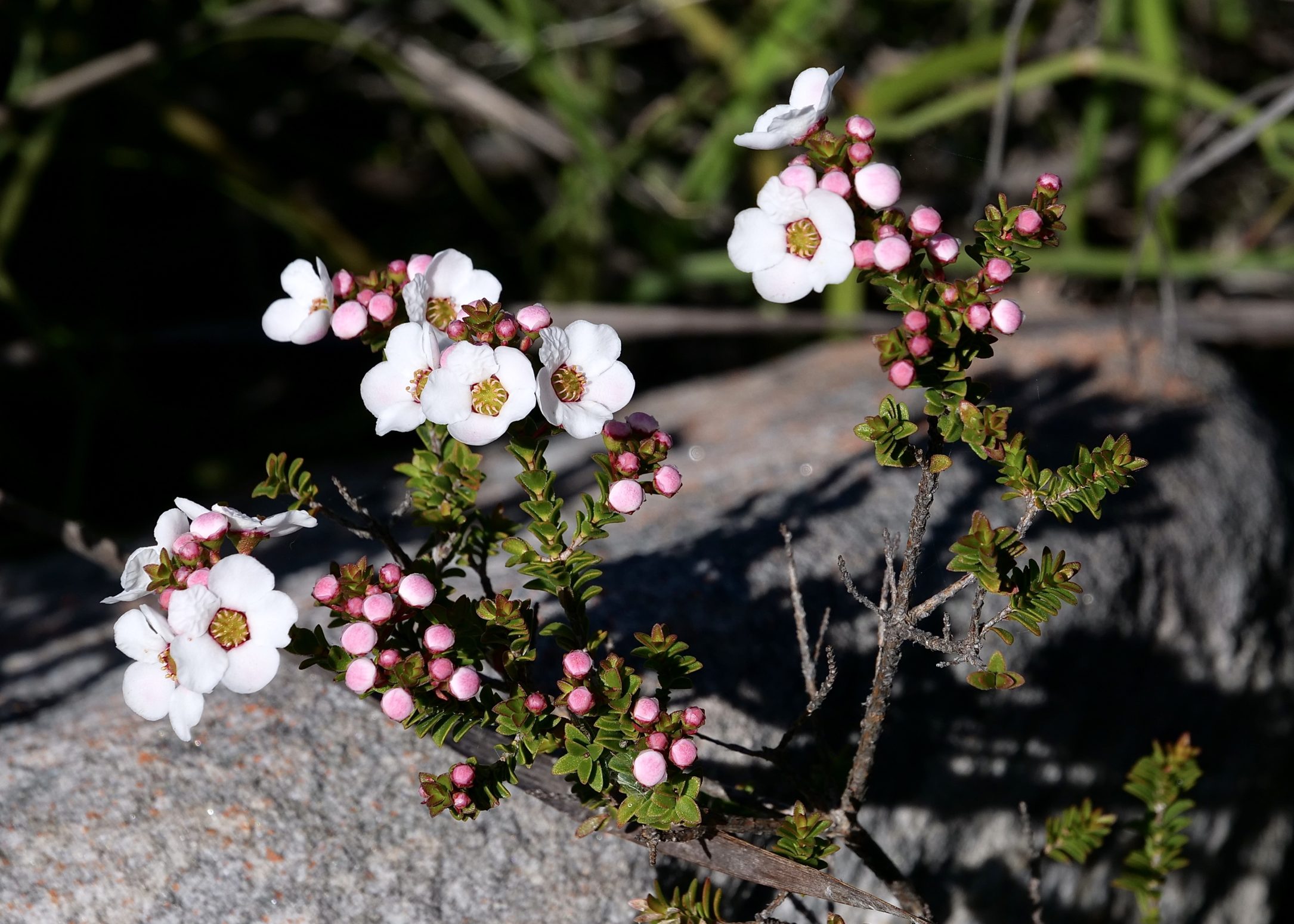
Some extraordinary plants are not at all conspicuous. In the extraordinary Spring of 2021 many Bird Orchids were present on the lower slopes of East Mount Barren, among many other southwestern WA places.
From experience, I know that most of them are never seen by most of the humans who walk nearby.
I think that this post’s Bird Orchid is Pterostylis turfosa, the Bearded Bird Orchid.
Bird Orchids are masters of the art of sexual deception. (among flowering plants at least, southwestern WA is the known universe’s sexual deception hotspot)
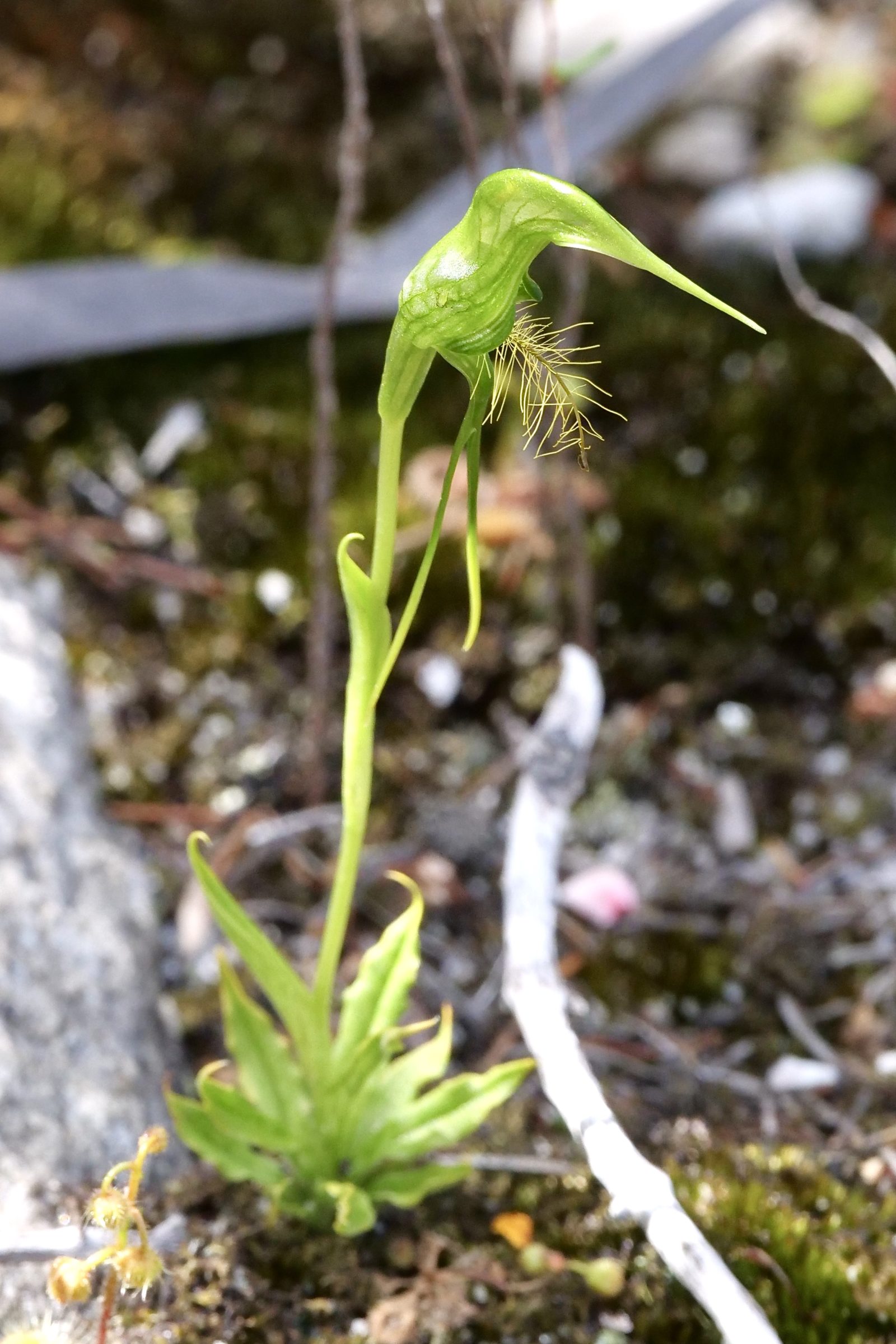
A particular Bird Orchid targets/deceives a particular species of gnat.
If you zoom in on/enlarge the image below you will notice a gnat is present on the orchid; I suspect that he or she is the plant’s preferred pollinator.
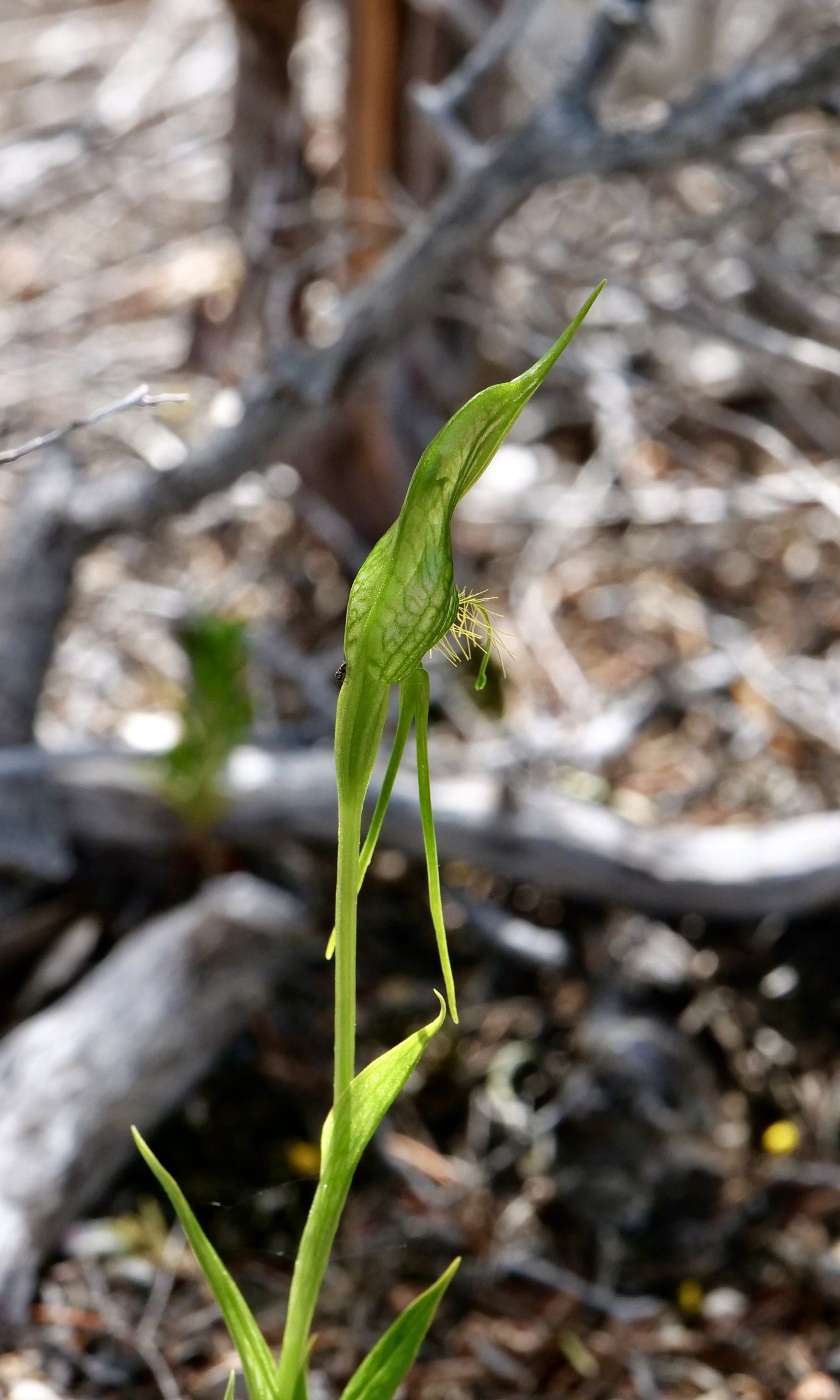
Coming soon: East Mount Barren: vistas.
Before that, Pelican Yoga will introduce you to a wonderful new recording that includes an entirely new song/poem and an exquisite new version of a very old song.
The latter is the fruit of a request from Margaret Atwood.
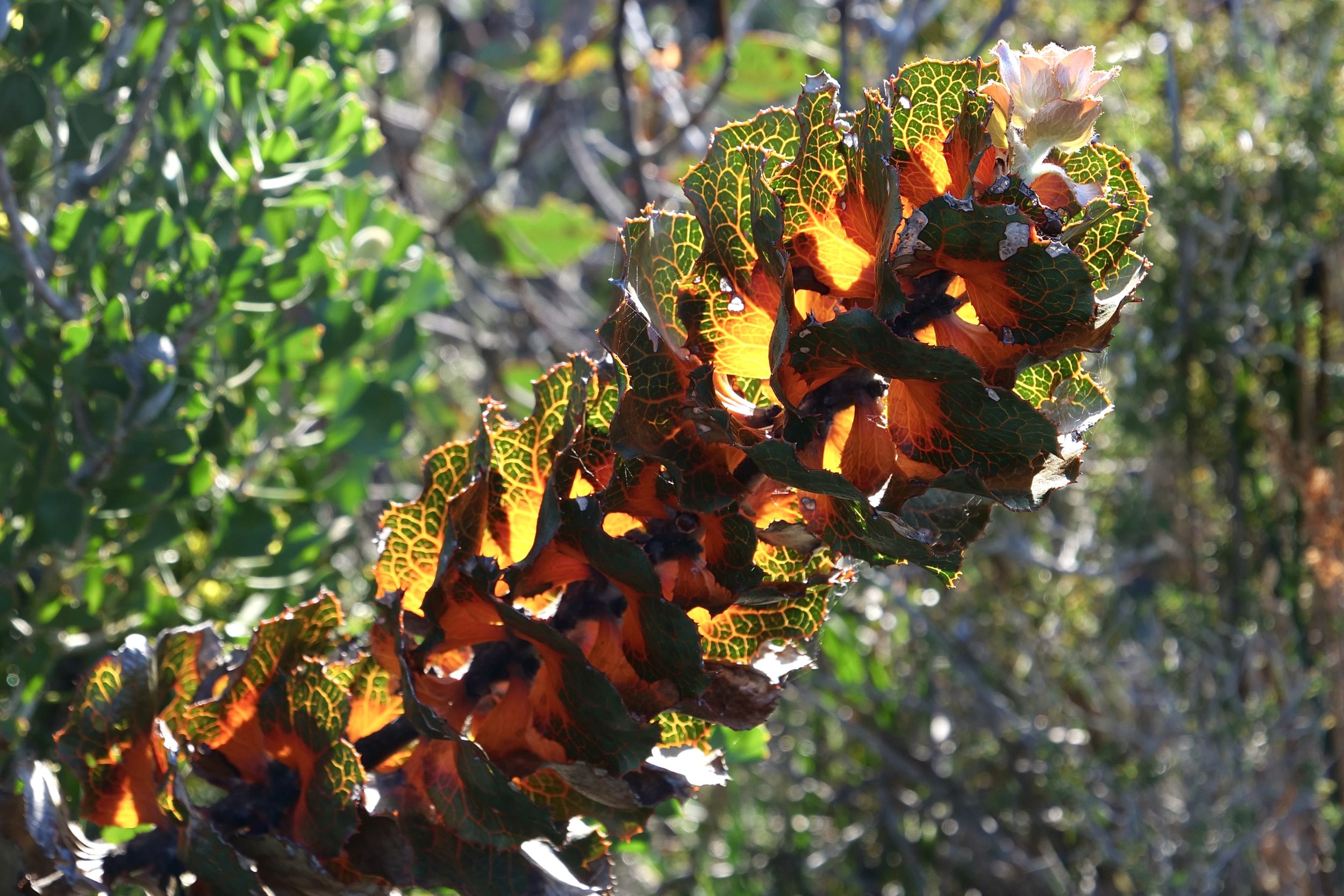
[…] East Mount Barren: flora […]